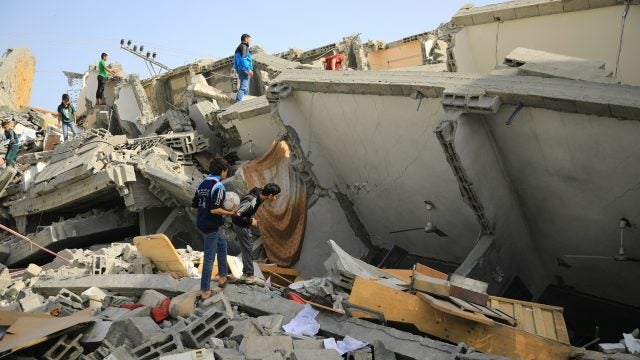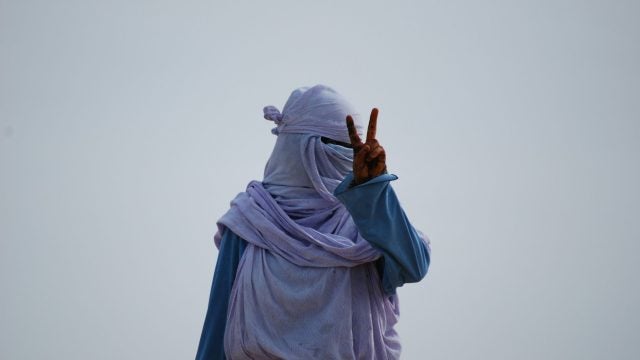Title: Decreasing Domestic Violence in Tajikistan Requires Safe Reporting Mechanisms
Safe and accessible reporting mechanisms provide a clear path forward for decreasing domestic violence, empowering women, and thereby, clearing a path for development. Without women who make up fifty percent of the population, Tajikistan’s overall development will remain limited.
Introduction
The screaming woke me up at around 2 a.m. It was not the first time and certainly would not be the last. My apartment filled with the shouting and violence from next door, where a drunken husband beat his wife in the late evening and early morning hours. This was almost a nightly occurrence after the husband returned home from his evening drinking. The large post-Soviet apartment buildings in Dushanbe had three-foot-thick concrete walls which should have been able to mask activities in neighboring apartments, but not this. The screaming stuck with me, as did the bruises on my neighbor’s body and face I would see in the open courtyard outside of the building where mothers would bake bread and kids would play.
In 2010, I was a Political Science PhD student at Rutgers University studying border security and cooperation along the border of Tajikistan and Afghanistan. After hearing of this ongoing violence, I wondered if victims of domestic violence in Tajikistan had access to help or reporting the abuse. Two colleagues of mine researched this topic, as it related to high rates of domestic violence perpetrated by these male migrant laborers upon their return home. Overwhelmingly, the women we interviewed at the time reported that most of the police officers engaged in domestic violence themselves, and they largely viewed it as a family matter. If the women reported it to the police, the police would likely tell the husbands and the women would be beaten worse than before. With this in mind, I decided to approach men about the issue. I expected the Tajik men to at least say they did not engage in domestic abuse or sexual assault, but I was mistaken. The majority of men I spoke with about the issue in Dushanbe and Khatlon said that physically disciplining their wives and daughters was necessary:
If your wife doesn’t listen the first time properly, you warn her. If she does the same thing again, you hit her lightly. If she does it again, you must beat her properly. This is the role of the man in the house. He must show he is in charge, and the women in the house must obey him. If he lets them get away with misbehavior, he is not a proper man. He is a weak man and should be ashamed.
Through living with and interviewing hundreds of women in villages across Khatlon, Gorno-Badakhshan, and Khujand, I learned that this high incidence of domestic violence was not only perpetrated against wives by husbands but also against daughters-in-law by mothers-in-law. Human Rights Watch and personal interviews highlighted the prevalence of reoccurring violence and punitive actions, including sexual violence, beating with sticks, strangulation, food deprivation, standing outside in winter, as well as denial of access to work or education by mothers-in-law, and verbal abuse. Tajik men believed these issues were between the women of the house and held that daughters-in-law deserved to be disciplined for unsatisfactory work. Ultimately, interviews and reports pointed to the same issues—there was no reliable or safe way for victims to report domestic violence without risking being severely beaten or cast out of their families, as Tajik society believed family disputes should always be handled privately. Violence against primarily young women was endemic, family-based, and widely accepted; as a result, women had nowhere to go for assistance or to report the abuse.
Evaluation of Current Legislation
In 2013, The President of Tajikistan mandated that gender equality and the prevention of violence against women and girls become a part of the national plan. Focused on gender equity and reducing domestic violence, this legislation was seen as the result of “ten years of struggle and advocacy” by Tajik civil society. The new legislation showed that, while deeply entrenched cultural norms around violence against women in the homes exist, there were potential paths to alleviating this issue in Tajikistan, as well as other countries with deeply entrenched and endemic problems with violence against women and girls. These pathways included programs for police reform, governmental support for educational programs, increasing female participation in government and law enforcement, and other projects aimed at empowerment. While these are certainly positive changes, they have had limited impact. According to a recent UNHCR Report (2018), in 2017, only 65 of 1,200 reports of domestic violence and rape resulted in a charge against the perpetrator, a woefully low rate of conviction for the many thousands of women in the country who are victims of ongoing discrimination, harassment, and violence.
Decreasing Violence Against Women: Education, Reporting Mechanisms, and Safe Houses
In 2014, I attended a community meeting in Khatlon that sought to address domestic violence as part of the Tajik government’s new plan. Women sat along one wall, while men sat along the other side of the mosque. The Imam spoke about how violence against women and girls was against the values of Islam and how men in the community needed to stop and heed the advice of religious leaders. In response, numerous men claimed that physically disciplining their wives, daughters, and daughters-in-law was a family matter and that beatings were necessary to control the family. It was clear from this meeting, among the others I attended, that transforming societal norms surrounding domestic violence would require not just educational programs but also the establishment of safe services for women experiencing domestic violence.
Shortly after this fieldwork, I co-designed a project that has been hailed as a “miracle” in terms of its success in addressing domestic violence in Tajikistan. The project had two main goals: to engage the community in education regarding domestic violence and to provide a safe space for all community members to discuss issues related to violence against women. This included bringing male members of the households into the conversation as well as providing a safe space for the young women who were the majority of the victims of the violence. This project was, however, only implemented in a few districts. While it may have provided a small group of women and families with a means to mediate challenges, it hardly addressed the endemic pattern of domestic violence, sexual harassment, and discrimination that exists in Tajikistan. The project highlighted the possibility of shifting norms within families and communities through education, training, group discussions, and counseling, but it lacked any real impact on the country as a whole. Without more comprehensive reforms, the women of Tajikistan will remain at risk of being killed, raped, and committing suicide.
In order to make reforms, four basic steps need to be taken.
First, an aggressive country-wide education program working with both men and women focused on preventing violence against women and girls must be implemented in schools, hospitals, village centers, and mosques. While the small pilot program described above effectively engaged in as a means to transform norms in some villages, similar programs should be supported country-wide along with mitigation programs for when abuses occur. Since the government of Tajikistan has officially announced this as one of their goals, a proper national program of the kind described should be possible.
Second, given the familial abuse perpetrated by mothers-in-law against daughters-in-law, all Tajik sub-districts need to establish anonymous reporting mechanisms (e.g. a hotline) that are safe, properly vetted, and staffed with trained counselors or support staff. If reports are deemed as immediate and/or life-threatening situations, each province must provide a safe house that guarantees security and anonymity for victims. Lastly, the leadership within Tajikistan, which mandated the inclusion and empowerment of women in 2013, needs to address these issues from the top down by requiring law enforcement to respond effectively to reports of domestic abuse, adopt a zero-tolerance policy on a national level, and increase access to support and counseling as part of a national public health program.
Conclusion
There are numerous women’s groups and active female leaders in Tajikistan who have successfully brought about change. In the past few years, thirty-three crisis centers have opened up across Tajikistan, along with more educational programs, training workshops, and health programs. These successes highlight that there is hope in decreasing violence against women and girls in Tajikistan. However, i within a country where one in five women are reported to be victims of domestic violence, the low numbers of reports and even lower numbers of criminal prosecution point to a distinct lack of success of the current legislation. They point to the inefficiency of Tajikistan’s national plan of action. There is still a long way to go before changes to familial customs, norms, and the full societal inclusion of women are fully realized.
. . .
Suzanne Levi-Sanchez, PhD, is an Assistant Professor of National Security Affairs Department at the US Naval War College in Newport Rhode Island. Professor Levi-Sanchez holds a PhD from Rutgers University in Political Science. Her prior academic appointments include Princeton University (funded by IREX and the American Institute for Afghan Studies) and the University of Illinois (funded by a grant from USAID). Dr. Levi-Sanchez also received funding for her research from the University of Delaware, UCLA, the Mina Houtan Foundation, and Rutgers University, which supported her fieldwork along the Tajik/Afghan border from 2009-2015. She is the author of a number of publications including a book from Routledge, The Afghan-Central Asia Borderlands: The State and Local Leaders, and a second book entitled, The Social Organization of the Unspoken: Informal Organizations in Tajik/Afghan Badakhshan, with University of Michigan Press (Forthcoming, 2021).
The views expressed here are solely those of the author.
Recommended Articles

This article analyses the distortions of the International Humanitarian Law (IHL) notion of proportionality in the context of the Israel-Gaza war. It discusses Israel’s attempts to reinterpret proportionality to justify…

The escalating women’s rights crisis in Afghanistan demonstrates a gap in international legal protections of the rights of women and girls. The international community should fill this gap by making…

This article situates Bangladeshi and Global South feminist praxis, a process by which theory is realized into action, within broader critiques of international law by Third World Approaches to International…